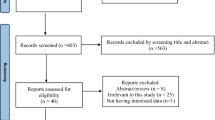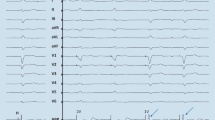Abstract
Background
There is currently no particularly effective strategy for patients with persistent atrial fibrillation accompanying heart failure with preserved ejection fraction (HFpEF), especially with recurrent atrial fibrillation after ablation. In this study, we will evaluate a new treatment strategy for patients with persistent atrial fibrillation who had at least two attempts (≧2 times) of radio-frequency catheter ablation but experienced recurrence, and physiologic conduction was reconstructed after atrioventricular node ablation or drug therapy, to control the patient's ventricular rate to maintain a regular heart rhythm, which is called His–Purkinje conduction system pacing (HPCSP) with atrioventricular node ablation.
Methods and results
This investigator-initiated, multicenter prospective randomized controlled trial aimed to recruit 296 randomized HFpEF patients with recurrent atrial fibrillation. All the enrolled patients were randomly assigned to the pacing group or the drug treatment group. The primary endpoint is differences in cardiovascular events and clinical composite endpoints (all-cause mortality) between patients in the HPCSP and drug-treated groups. Secondary endpoints included heart failure hospitalization, exercise capacity assessed by cardiopulmonary exercise tests, quality of life, echocardiogram parameters, 6-minute walk distance, NT-ProBNP, daily patient activity levels, and heart failure management report recorded by the CIED. It is planned to compete recruitment by the end of 2023 and report in 2025.
Conclusions
The study aims to determine whether His–Purkinje conduction system pacing with atrioventricular node ablation can better improve patients' symptoms and quality of life, postpone the progression of heart failure, and reduce the rate of rehospitalization and mortality of patients with heart failure.
Clinical trial registration number: ChiCTR1900027723, URL:http://www.chictr.org.cn/edit.aspx?pid=46128&htm=4


Similar content being viewed by others
Data Availability (Data Transparency)
The clinical trial registration number is ChiCTR1900027723, the data can be tracked at the following website, Chinese Clinical Trial Registry. URL:http://www.chictr.org.cn/edit.aspx?pid=46128&htm=4.
Code Availability (Software Application or Custom Code)
Not applicable.
Abbreviations
- AF:
-
Atrial fibrillation
- HF:
-
Heart failure
- HFpEF:
-
Heart failure with preserved ejection fraction
- HFrEF:
-
Heart failure with reduced ejection fraction
- LV:
-
Left ventricle
- CA:
-
Catheter ablation
- MRA:
-
Mineralocorticoid receptor antagonist
- RFCA:
-
Radio-frequency catheter ablation
- AAD:
-
Antiarrhythmic drugs
- AVNA:
-
Atrioventricular node ablation
- SGLT2:
-
Sodium-dependent glucose cotransporter 2
- ODT:
-
Optimized drug therapy
- RVP:
-
Right ventricular pacing
- CRT:
-
Cardiac resynchronization therapy
- HPCSP:
-
His–Purkinje conduction system pacing
- HBP:
-
His-bundle pacing
- LBBB:
-
Left bundle branch block
- LVEDD:
-
Left ventricular end diastolic diameter
- LVEF:
-
Left ventricular ejection fraction
- NDHP-CCB:
-
Non dihydropyridine-calcium blocker
- LBBP:
-
Left bundle branch pacing
- QOL:
-
Quality of life
- BNP:
-
B-type natriuretic protein
- NT-proBNP:
-
N-terminal pro-B-type natriuretic peptide
- LVH:
-
Left ventricular hypertrophy
- LAE:
-
Left atrial enlargement
- HR:
-
Heart rate
- INR:
-
International normalized ratio
- ECG:
-
Electrocardiogram;
- RAO:
-
Right anterior oblique
- Stim-LVAT:
-
Stimulus to left ventricular activation time
- LBB:
-
Left bundle branch
- AVB:
-
Atrioventricular block
- CPET:
-
Cardiopulmonary exercise test
- OUES:
-
Oxygen uptake efficiency slope
- VE/VCO2:
-
Ventilation/volume of carbon dioxide released
- CIED:
-
Cardiovascular implantable electronic device
- MLHFQ:
-
Minnesota Living with Heart Failure Questionnaire
- GLM:
-
Generalized linear model
- RBBB:
-
Right bundle branch block
- AVD:
-
AV delay
References
Taniguchi N, Miyasaka Y, Suwa Y, Harada S, Nakai E, Shiojima I. Heart Failure in Atrial Fibrillation – An Update on Clinical and Echocardiographic Implications. Circ J. 2020;84(8):1212–7.
Kirchhof P, Benussi S, Kotecha D, et al. 2016 ESC Guidelines for the management of atrial fibrillation developed in collaboration with EACTS. Europace. 2016;18(11):1609–78.
Goyal P, Almarzooq ZI, Cheung J, et al. Atrial fibrillation and heart failure with preserved ejection fraction: Insights on a unique clinical phenotype from a nationally-representative United States cohort. Int J Cardiol. 2018;266:112–8.
Ambrosy AP, Fonarow GC, Butler J, et al. The global health and economic burden of hospitalizations for heart failure: lessons learned from hospitalized heart failure registries. J Am Coll Cardiol. 2014;63(12):1123–33.
Kotecha D, Lam CS, Van Veldhuisen DJ, Van Gelder IC, Voors AA, Rienstra M. Heart Failure With Preserved Ejection Fraction and Atrial Fibrillation: Vicious Twins. J Am Coll Cardiol. 2016;68(20):2217–28.
Owan TE, Hodge DO, Herges RM, Jacobsen SJ, Roger VL, Redfield MM. Trends in prevalence and outcome of heart failure with preserved ejection fraction. N Engl J Med. 2006;355(3):251–9.
Bhatia RS, Tu JV, Lee DS, et al. Outcome of heart failure with preserved ejection fraction in a population-based study. N Engl J Med. 2006;355(3):260–9.
Schwartzenberg S, Redfield MM, From AM, Sorajja P, Nishimura RA, Borlaug BA. Effects of vasodilation in heart failure with preserved or reduced ejection fraction implications of distinct pathophysiologies on response to therapy. J Am Coll Cardiol. 2012;59(5):442–51.
Iwano H, Little WC. Heart failure: what does ejection fraction have to do with it? J Cardiol. 2013;62(1):1–3.
Ponikowski P, Voors AA, Anker SD, et al. ESC Guidelines for the diagnosis and treatment of acute and chronic heart failure. Polish. 2016;74(10):1037–147.
Machino-Ohtsuka T, Seo Y, Ishizu T, et al. Efficacy, safety, and outcomes of catheter ablation of atrial fibrillation in patients with heart failure with preserved ejection fraction. J Am Coll Cardiol. 2013;62(20):1857–65.
Ma C, Luo H, Fan L, Liu X, Gao C. Heart failure with preserved ejection fraction: an update on pathophysiology, diagnosis, treatment, and prognosis. Braz J Med Biol Res. 2020;53(7):e9646.
Sohinki D, Ho J, Srinivasan N, Collins LJ, Obel OA. Outcomes after atrioventricular node ablation and biventricular pacing in patients with refractory atrial fibrillation and heart failure: a comparison between non-ischaemic and ischaemic cardiomyopathy. Europace. 2014;16(6):880–6.
Hoffmayer KS, Scheinman M. Current role of atrioventricular junction (AVJ) ablation. Pacing Clin Electrophysiol. 2013;36(2):257–65.
Hamdan MH, Freedman RA, Gilbert EM, Dimarco JP, Ellenbogen KA, Page RL. Atrioventricular junction ablation followed by resynchronization therapy in patients with congestive heart failure and atrial fibrillation (AVERT-AF) study design. Pacing Clin Electrophysiol. 2006;29(10):1081–8.
Palmiero G, Florio MT, Rubino M, Nesti M, Marchel M, Russo V. Cardiac Resynchronization Therapy in Patients with Heart Failure: What is New? Heart Fail Clin. 2021;17(2):289–301.
Gasparini M, Regoli F, Galimberti P, Ceriotti C, Cappelleri A. Cardiac resynchronization therapy in heart failure patients with atrial fibrillation. Europace. 2009;11(Suppl 5):v82–6.
Vijayaraman P, Chung MK, Dandamudi G, et al. ACC’s Electrophysiology Council. His Bundle Pacing. J Am Coll Cardiol. 2018;72(8):927–47.
Sheng X, Pan YW, Yu C, et al. Comparison of synchronization between left bundle branch and his bundle pacing in atrial fibrillation patients: An intra-patient-controlled study. Pacing Clin Electrophysiol. 2021;44(9):1523–31.
Huang W, Su L, Wu S. Pacing Treatment of Atrial Fibrillation Patients with Heart Failure: His Bundle Pacing Combined with Atrioventricular Node Ablation. Card Electrophysiol Clin. 2018;10(3):519–35.
Huang W, Su L, Wu S, et al. A novel pacing strategy with low and stable output: pacing the left bundle branch immediately beyond the conduction block[J]. Can J Cardiol. 2017;33(12):1736. e1–1736.
Chen X, Wu S, Su L, Su Y, Huang W. The characteristics of the electrocardiogram and the intracardiac electrogram in left bundle branch pacing. J Cardiovasc Electrophysiol. 2019;30(7):1096–101.
Vogler J, Keelani A, Traub A. Tilz RR. ESC-Leitlinien 2021 zur Schrittmacher- und Resynchronisationstherapie: Was gibt es Neues? [ESC guidelines 2021 on cardiac pacing and cardiac resynchronization therapy: What's new?]. Herz. 2022;47(1):31–40 German.
Pieske B, Tschöpe C, de Boer RA, et al. How to diagnose heart failure with preserved ejection fraction: the HFA-PEFF diagnostic algorithm: a consensus recommendation from the Heart Failure Association (HFA) of the European Society of Cardiology (ESC). Eur Heart J. 2019;40(40):3297–317.
Vijayaraman P, Dandamudi G. How to Perform Permanent His Bundle Pacing: Tips and Tricks. Pacing Clin Electrophysiol. 2016;39(12):1298–304.
Huang W, Chen X, Su L, Wu S, Xia X, Vijayaraman P. A beginner's guide to permanent left bundle branch pacing. Heart Rhythm. 2019;16(12):1791–6.
Huang W, Su L, Wu S, et al. Benefits of Permanent His Bundle Pacing Combined With Atrioventricular Node Ablation in Atrial Fibrillation Patients With Heart Failure With Both Preserved and Reduced Left Ventricular Ejection Fraction. J Am Heart Assoc. 2017;6(4):e005309.
Guazzi M, Bandera F, Ozemek C, Systrom D, Arena R. Cardiopulmonary Exercise Testing: What Is its Value? J Am Coll Cardiol. 2017;70(13):1618–36.
Agostoni P, Dumitrescu D. How to perform and report a cardiopulmonary exercise test in patients with chronic heart failure. Int J Cardiol. 2019;288:107–13.
Hamdan MH, Freedman RA, Gilbert EM, Dimarco JP, Ellenbogen KA, Page RL. Atrioventricular junction ablation followed by resynchronization therapy in patients with congestive heart failure and atrial fibrillation (AVERT-AF) study design. Pacing Clin Electrophysiol. 2006;29(10):1081–8.
Ling LH, Khammy O, Byrne M, et al. Irregular rhythm adversely influences calcium handling in ventricular myocardium: implications for the interaction between heart failure and atrial fibrillation. Circ Heart Fail. 2012;5(6):786–93.
Acknowledgements
We would like to thank Dr. Xiaohong Zhou (Department of Cardiac Rhythm and Heart Failure, Medtronic, Minneapolis, MN, USA) for his diligent review of our manuscript.
Funding
This work was supported by the Medical and health science program of Zhejiang Province (No.2018KY467, 2019KY416) and the Medical Health Science and Technology Project of Zhejiang Provincial Health Commission (2020KY596).
Author information
Authors and Affiliations
Contributions
All authors contributed to the study conception and design. Material preparation, data collection and analysis were performed by Jiefang Zhang, Yiwen Pan and Jing Gao. The first draft of the manuscript was written by Jiefang Zhang, and all authors commented on previous versions of the manuscript. All authors read and approved the final manuscript.
Corresponding author
Ethics declarations
Ethics Approval
The study conforms to the guiding principles of the Declaration of Helsinki, and the patients will provide informed consent of the procedure and publication that was approved by the Institutional Committee on Human Research.
Consent to Participate
Informed consent was obtained from all individual participants included in the study.
Consent to Publish
The authors affirm that human research participants provided informed consent for the publication of the images in Figs. 1 and 2.
Conflicts of Interest
The authors have no relevant financial or non-financial interests to disclose.
Additional information
Publisher’s Note
Springer Nature remains neutral with regard to jurisdictional claims in published maps and institutional affiliations.
Rights and permissions
Springer Nature or its licensor (e.g. a society or other partner) holds exclusive rights to this article under a publishing agreement with the author(s) or other rightsholder(s); author self-archiving of the accepted manuscript version of this article is solely governed by the terms of such publishing agreement and applicable law.
About this article
Cite this article
Zhang, J.F., Pan, Y.W., Li, J. et al. Comparison of His–Purkinje Conduction System Pacing with Atrial–Ventricular Node Ablation and Pharmacotherapy in HFpEF Patients with Recurrent Persistent Atrial Fibrillation (HPP-AF study). Cardiovasc Drugs Ther (2023). https://doi.org/10.1007/s10557-023-07435-2
Accepted:
Published:
DOI: https://doi.org/10.1007/s10557-023-07435-2




